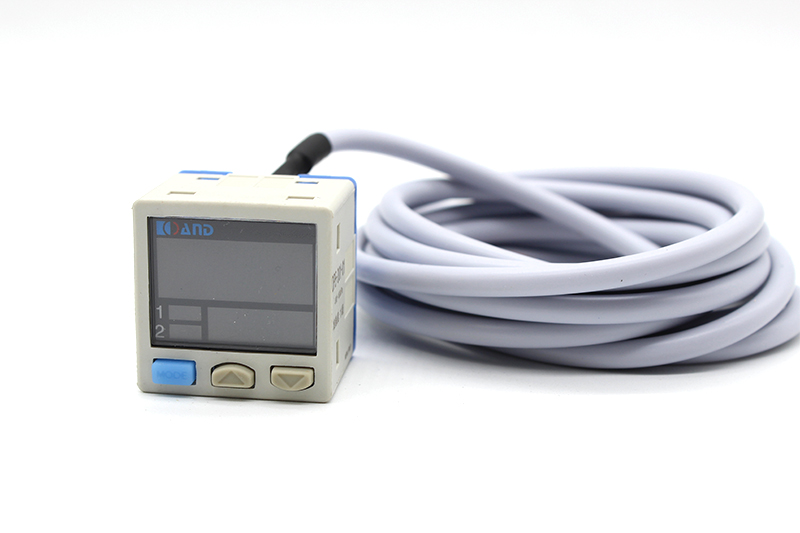In modern industry, scientific research, and daily life, the barometer plays an indispensable role as an important measuring tool. It can accurately measure the pressure of gases, helping us better understand and control various pressure related processes. Whether it is ensuring the efficient operation of industrial production or ensuring the safe use of equipment, pressure gauges play a crucial role. This article will provide a detailed introduction to the principles, applications, and how to choose a suitable barometer.

1、 The working principle of a barometer
A barometer is an instrument used to measure gas pressure, and its working principle is based on the relationship between pressure and force in physics. When gas is applied to the sensing element of a pressure gauge, the sensing element undergoes deformation or displacement, which is converted into a readable pressure value through mechanical or electronic devices. Common barometers have the following working principles:
(1). Elastic element type barometer
The elastic element type pressure gauge is the most common type, and its core component is an elastic element, such as a spring tube, bellows, or diaphragm. When gas pressure acts on an elastic element, the elastic element undergoes deformation, and the magnitude of the deformation is proportional to the gas pressure. By using a mechanical transmission device to convert deformation into pointer deflection or digital display, pressure measurement can be achieved.
(2). Liquid column pressure gauge
Liquid column pressure gauges use the static pressure of liquids to measure gas pressure. Common types include U-tube pressure gauges and single tube pressure gauges. The principle is based on Pascal's law, which states that gas pressure is directly proportional to the height difference of the liquid column. By measuring the height difference of the liquid column, the pressure of the gas can be calculated.
(3). Capacitive and Inductive Barometers
With the development of electronic technology, capacitive and inductive pressure gauges are gradually being applied in the field of high-precision measurement. Capacitive pressure gauges reflect pressure changes by measuring changes in capacitance, while inductive pressure gauges achieve pressure measurement by measuring changes in inductance. These pressure gauges have the characteristics of high accuracy and fast response, and are suitable for automation control systems.
2、 Application of Barometer
The application range of barometers is very wide, covering multiple fields such as industrial production, scientific research, environmental protection, and daily life.
(1). Industrial production
In industries such as chemical, petroleum, and natural gas, pressure gauges are used to monitor the pressure inside pipelines and equipment, ensuring the safety and stability of the production process. For example, in the process of petroleum refining, a pressure gauge can monitor the pressure inside the reactor in real time to prevent safety accidents caused by excessive pressure.
(2). Scientific research
In scientific research fields such as meteorology and physics, high-precision barometers are used to measure atmospheric pressure, laboratory gas pressure, and so on. These data are of great significance for studying climate change, gas dynamics, and other related fields.
(3). Environmental protection
In environmental monitoring, a barometer can be used to measure atmospheric pressure, combined with other sensors, to analyze environmental changes. For example, in air quality monitoring, data from barometers can help scientists better understand the diffusion patterns of pollutants.
(4). Daily life
In daily life, barometers can also be seen everywhere. For example, the Tire Pressure Monitoring System (TPMS) for automobiles is a common application of pressure gauges, which can monitor the pressure inside the tires in real time to ensure driving safety.
3、 Choose the appropriate pressure gauge
Choosing a suitable barometer requires comprehensive consideration of multiple factors such as measurement range, accuracy, environmental conditions, and budget.
(1). Measurement range
Select a suitable measurement range based on the actual application requirements. For example, if high-pressure gas needs to be measured, a pressure gauge with a larger range should be selected; If measuring a low-pressure environment, a high-precision low-pressure pressure gauge needs to be selected.
(2). Accuracy requirements
Accuracy is an important indicator for selecting a barometer. For general industrial applications, the accuracy of mechanical pressure gauges may already be sufficient; For high-precision scientific research and automation control fields, electronic or intelligent pressure gauges need to be selected.
(3). Environmental conditions
The usage environment of a barometer can also affect its selection. For example, in high temperature, high humidity, or corrosive environments, it is necessary to choose a pressure gauge with the corresponding protection level to ensure its long-term stable operation.
(4). Budget
Budget is also a factor to consider when choosing a barometer. Mechanical pressure gauges are relatively inexpensive and suitable for situations with limited budgets; Although electronic and smart barometers are more expensive, they have higher performance and additional functions.
4、 Summary
As an important measuring tool, the barometer plays an irreplaceable role in modern industry, scientific research, and daily life. By accurately measuring gas pressure, pressure gauges help us better control and optimize various pressure related processes, ensuring safety and efficiency. With the continuous advancement of technology, the types and functions of barometers are also increasing, providing users with more choices. Choosing a suitable pressure gauge requires comprehensive consideration of factors such as measurement range, accuracy, environmental conditions, and budget to ensure that it can maximize its value in practical applications.
Whether in complex industrial production environments or simple applications in daily life, barometers have become a powerful tool for us to control pressure with their accurate measurement ability and reliable performance.
Prev:The main applications and functions of regulating valves in industry
Next:Air exhaust: a multifunctional industrial and living assistance equipment







